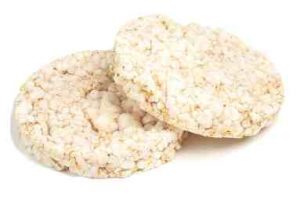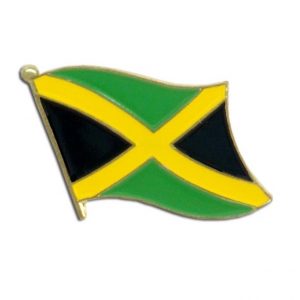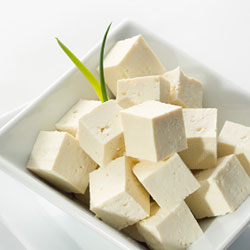Written by Guest Contributor on The Prepper Journal.
Editors Note: Another guest contribution from Robert Johnson to The Prepper Journal. As many still process and store their own foods, this is valuable information for preppers considering that one day we may be limited to just what we have saved. If you have information for Preppers that you would like to share and possibly receive a $25 cash award as well as be entered into the Prepper Writing Contest with a chance to win one of three Amazon Gift Cards with the top prize being a $300 card to purchase your own prepping supplies, enter today.
When someone asks you about your preps do you think about how you will flavor your food? I was talking with an experienced prepper at an event the other day and he mentioned his food preparations. We discussed the MREs and staple foods he had stocked up. His growing garden of vegetables, potatoes and squash. He also mentioned his Bug Out location had a great amount of wild game (deer, squirrel, rabbit, snakes, lizards and boar).

But the one thing he never talked about was how he was going to prepare his food, or rather how he was going to keep his meals interesting.

Anyone who has had bland food knows that it’s hard to eat and get down. Anyone who has experienced eating the same tasteless dish over and over again will tell you that it wears on you.

Once you know the herbs and spices that go together it’s easy to combine them and use them on any dish. Use a different combination for the same dish and you have a completely different meal. Knowing and using different herb combinations will extend your meal preparations, make it easy to have tasty dishes and will most assuredly keep moral up.
CLASSIC HERB AND SPICE COMBINATIONS

Like mirepoix, French cuisine has certain herbs and spices it is known for and they go together well on any dish. French herbs may contain a variety of ingredients including basil, marjoram, thyme, rosemary, bay leaf, sage, or peppercorns. Generally this combination is referred to as bouquet garni which is a generic term for fresh herbs tied into a bundle and used to infuse soups, stews, and stocks. The bundle of herbs is then removed prior to serving. The herbs of thyme, rosemary and basil mixed with lemon goes well in any white meat dish (chicken, pork, and fish). Bay leaf, sage and peppercorn will brighten any red meat (beef, venison).
Another French blend of spices is Herbs de Provence consisting of lavender, fennel, basil, and thyme. These herbs are all native to Provence, France, and provide a flavorful blend, perfect for fish or white meats, and vegetables.
Another blend of spices is Quatre Epices, used in French cuisine, it has a more Mediterranean and Middle Eastern flair. It consists of equal parts of pepper, cloves, nutmeg, and ginger. It is great for for soups, stews, and vegetables, and also meats and vegetables.

Sometimes referred to as “blackening” seasoning and it usually has a slight to more aggressive amount of heat and kick to it. It usually consists of paprika, garlic, black pepper, white pepper, and cayenne peppers, thyme, and oregano. It can be used on any meat or fish and generally is coated on the surface and then seared over high heat. The paprika turns a dark color giving the dish a “blackened” look.

Generally used on more fatty meats and dishes, the Chinese spices can give any dish a distinct flavor. The usual combination is star anise, cinnamon, cloves, sichuan peppers, and fennel seeds. It can be a spicy but sweet blend.
CURRY POWDER
Although Curry powder may vary based on country or even region, most consist of turmeric, cumin, coriander, and red pepper. You could also add in ginger, garlic, asafoetida, fennel seed, caraway, cinnamon, clove, mustard seed, green cardamom, black cardamom, nutmeg, white turmeric, long pepper, and black pepper to create different flavor combinations and to suit differing tastes. It is great as an all-purpose seasoning and can be used in stews, meats, vegetables and rice dishes.

Native to Jamaica, Jerk Seasoning relies on two spices, allspice and Scotch bonnet peppers, to deliver the flavorful components. You could also include cloves, cinnamon, nutmeg, thyme, and garlic to create different flavor combinations. Just like with Cajun Seasoning, Jerk Seasoning is usually applied as a rub to different meats but can also be used as a marinade. Traditionally used for slow cooking, do not be afraid to try with grilling or other meat preparations.

One popular ready made seasoning is Old Bay which was created in the Chesapeake Bay area in the early 20th century and is still popular today. Old Bay includes celery seed, bay leaf, pepper, cloves, cinnamon, nutmeg, cardamom, mace, ginger, mustard, and paprika. If you have ever made seafood you have probably used it at some point. While it is best known for seafood, it is an all-purpose seasoning which goes great on many meats, and dishes, like popcorn.
At any grocery store you can find a plethora of ready made seasoning mixes. If the idea of mixing your own herbs and spices terrifies you check out the ready made section and grab some different combinations. You can even buy combinations dedicated to specific meats and dishes although I generally buy the combinations that I can use for just about any dish or meat so as to not limit myself. Also do not buy ready made combinations that have salt as the first ingredient as it is generally a filler and the combination usually contains mostly salt and hardly any of the actual herbs and spices you want. Salt is always a great way to flavor food but it can be purchased on its own and in greater bulk for a cheaper price.
Spices and herbs can be bought in bulk but should be stored correctly in airtight containers. Also buying whole herbs and spices generally makes the flavors last longer than buying them in a chopped or crushed form (because they still contain their natural oils.) Also lots of herbs and spices can be grown in your garden if you have one and consider adding space so you have fresh herbs and spices for use with your foods, or to prepare and store for when the SHTF. You can also forage, where legal, for local herbs and spices to flavor your dishes.
Again even if you are surviving, you don’t have to eat bland tasteless food. You can turn the case of Ramen Noodles or that entire deer into a variety of dishes and flavors just by using the right combinations of herbs and spices.
The post Herbs and Spices – It is the Little Things appeared first on The Prepper Journal.
from The Prepper Journal
Don't forget to visit the store and pick up some gear at The COR Outfitters. How prepared are you for emergencies?
#SurvivalFirestarter #SurvivalBugOutBackpack #PrepperSurvivalPack #SHTFGear #SHTFBag



No comments:
Post a Comment